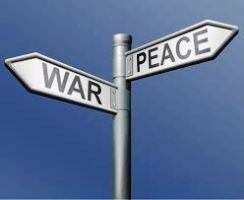 Nagorno-Karabakh conflict can’t be solved with international organizations’ involvement, as evidenced by the work of OSCE Minsk Group, which has for many years demonstrated its inefficiency, says Mehmet Fatih Oztarsu, co-president of the Turkish analytical center, the Strategic Outlook.
Nagorno-Karabakh conflict can’t be solved with international organizations’ involvement, as evidenced by the work of OSCE Minsk Group, which has for many years demonstrated its inefficiency, says Mehmet Fatih Oztarsu, co-president of the Turkish analytical center, the Strategic Outlook.
Oztarsu, who specializes on Caucasus region, told Trend Oct. 14 that the conflict can be solved with participation of the region’s countries, and partially with involvement of the US.
“If the US had been active in foreign policy, as it was during George W. Bush’s presidency, there could have been great changes in the Caucasus,” said the expert.
He said it would be difficult to solve the conflict ignoring Russia’s interests.
“Yerevan, feeling its weakness, wants to get Moscow’s support in this matter,” said Oztarsu.
He noted that the office term of the Armenian President Serzh Sargsyan will expire in 2018, but he is already trying to amend the country’s constitution to remain in power.
“In September this year, Sargsyan organized and held military drills called Shant-2015 to increase his popularity among the people,” the expert added.
Oztarsu believes that Armenia joined the Eurasian Economic Union for two reasons; to secure Russia’s support in the Karabakh issue, and to enhance Armenians’ position in Russia.
He also said that Azerbaijan’s importance for Russia is quite obvious.
“Russia will try from time to time, to persuade Baku to join the Eurasian Economic Union,” he added.
The conflict between the two South Caucasus countries began in 1988 when Armenia made territorial claims against Azerbaijan. As a result of the ensuing war, in 1992 Armenian armed forces occupied 20 percent of Azerbaijan, including the Nagorno-Karabakh region and seven surrounding districts.
The two countries signed a ceasefire agreement in 1994. The co-chairs of the OSCE Minsk Group, Russia, France and the US are currently holding peace negotiations. Armenia has not yet implemented the UN Security Council’s four resolutions on the liberation of the Nagorno-Karabakh and the surrounding regions.

 Ekim 14th, 2015
Ekim 14th, 2015  oztarsu
oztarsu  Posted in
Posted in  Tags:
Tags: